Imagine a world where the celestial bodies and the patterns they create hold profound significance for our lives. This is the realm of astrology, where the arrangement and alignment of planets, stars, and zodiac signs are believed to shape our destiny. Among the many astrological aspects, conjunctions play a key role in understanding the intricate connections between celestial bodies and their impact on our lives. In this article, we will delve into the significance of conjunctions in astrology, exploring their definitions, interpretations, effects, and how to identify and work with them in birth charts. Gain a deeper understanding of the cosmic symphony that shapes our existence and discover how conjunctions can unlock insights into our true selves and the world around us.
Contents
- What is a Conjunction?
- Interpreting Conjunctions in Astrology
- Major Conjunctions in Astrology
- Effects and Interpretation of Conjunctions
- Identifying Conjunctions in Birth Charts
- How to Work with Conjunctions
- Famous Conjunctions in History
- Conclusion
-
Frequently Asked Questions
- What is the significance of conjunctions in astrology?
- How are conjunctions interpreted in astrology?
- Are all conjunctions considered equally powerful?
- Can conjunctions affect our relationships?
- How can I identify conjunctions in my birth chart?
- Do conjunctions have different meanings based on the planets involved?
- Can conjunctions indicate career paths or life purpose?
- Are positive conjunctions always beneficial?
- Can negative conjunctions be mitigated or improved?
- Is it possible to have multiple conjunctions in a birth chart?
- References
-
Frequently Asked Questions
- 1. What is the significance of conjunctions in astrology?
- 2. How are conjunctions defined and explained in astrology?
- 3. What are the different types of conjunctions in astrology?
- 4. Why are conjunctions important in astrology?
- 5. What are the meanings and symbolism associated with conjunctions?
- 6. Which are some major conjunctions in astrology?
- 7. How do positive conjunctions impact individuals?
- 8. What are the effects of negative conjunctions?
- 9. How can conjunctions be identified in birth charts?
- 10. How can individuals work with conjunctions in astrology?
- References
- Read More
What is a Conjunction?
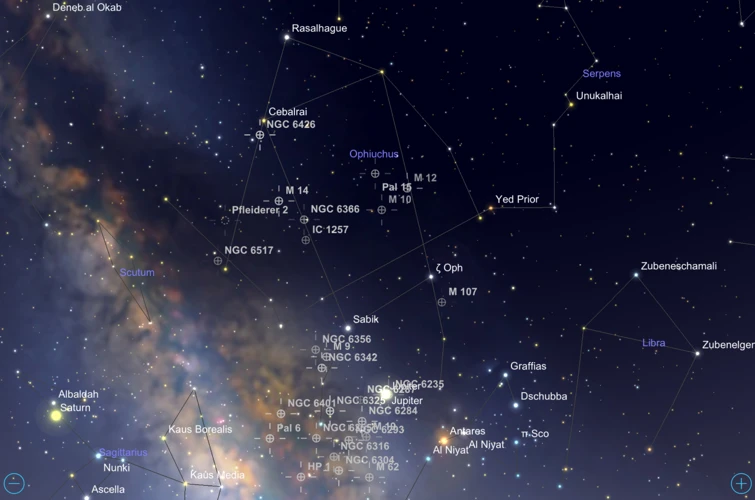
A conjunction in astrology refers to the alignment of two or more celestial bodies within a close proximity to one another in the zodiac. It occurs when planets, stars, or other important points in a birth chart come together in the same sign or degree. Conjunctions are considered powerful aspects, as they bring the energies of the involved celestial bodies into a harmonious or challenging alliance. These alignments can have a significant impact on an individual’s personality traits, behaviors, and life events. Astrologers closely study and interpret these conjunctions to gain insights into a person’s character and life path. They analyze the specific nature of the planets involved, their zodiac signs, and the degree of their alignment to understand the potential influence of the conjunction. It is important to note that not all conjunctions are equal in their effects. Some may create a powerful synergy, amplifying the energies of the planets involved, while others may form challenging aspects, creating tension and conflict. Understanding the intricacies of conjunctions enables astrologers to provide accurate and meaningful interpretations for individuals seeking astrological guidance. These interpretations can shed light on various aspects of life, including relationships, career paths, personal growth, and more. With a deeper understanding of conjunctions, we can unlock the secrets of celestial harmony and gain insights into the mysterious workings of the universe.
Suggested link: Ophiuchus: The Enigma of the Mystery Serpent Bearer
Definition and Explanation
To gain a deeper understanding of conjunctions in astrology, let’s explore their definition and explanation in more detail. A conjunction occurs when two or more celestial bodies align closely within the same zodiac sign or degree. It is important to note that the specific distance between the celestial bodies may vary depending on the astrologer’s interpretation, but generally, a conjunction is considered when the bodies are within 8 degrees of each other. This alignment brings the energies of the involved planets or points into a harmonious or challenging alliance, influencing various aspects of an individual’s life. The interpretation of conjunctions depends on the nature of the planets involved and their zodiac signs. For example, a conjunction between the Sun and the Moon, known as a “New Moon” conjunction, represents the start of a new lunar cycle and symbolizes new beginnings and fresh opportunities. Conversely, a conjunction between Mars and Saturn may indicate a clash of energies, potentially leading to conflict or obstacles. Understanding the meanings and symbolism associated with different planetary conjunctions allows astrologers to provide valuable insights into an individual’s personality traits, relationships, and life events. Through careful analysis and interpretation, astrologers can help individuals navigate their celestial journey and make informed decisions in various areas of life.
Suggested link: Astrological Compatibility: The Role of Rising Signs in Relationships
Types of Conjunctions
When it comes to astrology, there are various types of conjunctions that occur between celestial bodies. Each type has its own unique qualities and characteristics. One common type of conjunction is the planetary conjunction, which involves the alignment of two or more planets. This type of conjunction can have a powerful impact on an individual’s personality and experiences. For example, a conjunction between Venus and Mars can bring about a harmonious blend of love, passion, and desire. Another type of conjunction is the zodiac sign conjunction, which occurs when two or more planets align in the same zodiac sign. This type of conjunction amplifies the energies of that particular sign, influencing the individual’s traits and behaviors associated with that sign. For instance, a conjunction between the Sun and Mercury in the sign of Aquarius would enhance the independent and innovative qualities of the individual. Additionally, there are major conjunctions that hold significant importance in astrology. These include conjunctions between the Sun and the Moon, which signify a conjunction of the luminaries and often have a profound impact on one’s emotions and instincts. Understanding the different types of conjunctions allows astrologers to provide more accurate and detailed interpretations of an individual’s birth chart, offering insights into their unique cosmic configuration.
Suggested link: The Independent Spirit of Aquarius Zodiac
Interpreting Conjunctions in Astrology
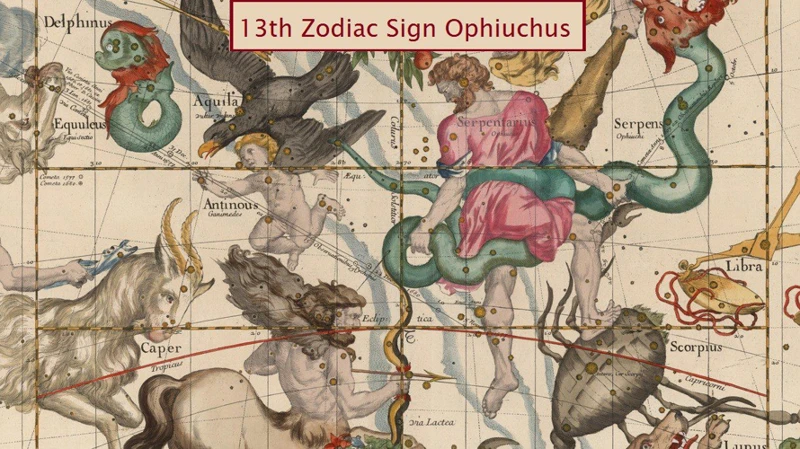
Interpreting conjunctions in astrology is a complex yet fascinating undertaking. Astrologers analyze the specific planetary alignments and their interactions to gain insights into a person’s life and character. The importance of conjunctions lies in the way they merge the energies of two or more celestial bodies, creating a dynamic blend that influences different aspects of one’s life. Each conjunction brings its own unique symbolism and meaning, which is determined by the planets involved and the zodiac sign in which the alignment occurs.
When interpreting conjunctions, astrologers consider both the positive and negative aspects of the alignment. Positive conjunctions can enhance and amplify the strengths and qualities associated with the planets involved. For example, a conjunction between the Sun and Mercury can enhance communication skills, intellectual abilities, and creativity. Similarly, a conjunction between Venus and Jupiter can bring about harmony, abundance, and a love for beauty.
On the other hand, negative conjunctions can indicate challenges and conflicts that individuals may face. For instance, a conjunction between Mars and Saturn can bring about a strong sense of responsibility and discipline, but it can also lead to frustration, limitations, and delays. Likewise, a conjunction between Uranus and Pluto can bring about radical transformations and upheavals, but it can also create unrest and unpredictability.
Interpreting conjunctions also involves considering the specific house placement in the birth chart, as this determines the area of life in which the energies of the conjunction will manifest. For example, a conjunction between the Moon and Neptune in the 7th house may indicate a highly empathetic and romantic nature, with a strong desire for spiritual connection in close relationships.
To gain a deeper understanding of the significance of conjunctions, astrologers examine the overall configuration of the birth chart and the aspects formed by the conjunction with other planets and points. This helps astrologers paint a more comprehensive picture of the individual’s life journey, potentials, challenges, and overall personality.
Interpreting conjunctions in astrology is an art that requires a deep understanding of astrological principles, symbolism, and intuition. By recognizing the significance of these alignments, we can tap into their energy, navigate life’s challenges, and harness the transformative power of the celestial dance that surrounds us.
No relevant anchor for an internal link was found in the text.
Importance of Conjunctions
The importance of conjunctions in astrology cannot be overstated. These celestial alignments hold a significant influence on an individual’s life and personality. Here are a few reasons why conjunctions are considered important in astrology:
1. Amplification of Energy: When two or more planets are in conjunction, their energies combine and intensify. This can create a powerful force that affects various areas of life depending on the planets involved. For example, a conjunction between Venus and Mars can enhance one’s passion, drive, and romantic pursuits.
2. Character Development: Conjunctions in a birth chart can reveal key aspects of an individual’s personality. They provide insights into the qualities and traits that are more prominent in a person’s character. For instance, a conjunction between the Sun and Mercury can indicate a strong intellect, good communication skills, and a sharp mind.
3. Synchronicity of Themes: Conjunctions often bring together planets that share similar themes or energies. This alignment creates a harmonious interplay between these celestial bodies, leading to a unified expression of their energies. For instance, a conjunction between Jupiter and Neptune can involve themes of spirituality, creativity, and idealism.
4. Fate and Life Events: Conjunctions have the potential to influence important life events and experiences. They often coincide with significant milestones, opportunities, or challenges in an individual’s life. For example, a conjunction between Saturn and the Moon may indicate periods of emotional growth, challenges related to nurturing or family, and a need for emotional stability.
5. Unique Individuality: Conjunctions contribute to the overall uniqueness and individuality of a person’s birth chart. They add depth and complexity to an individual’s astrological profile, highlighting specific areas of focus. Each conjunction provides a distinct flavor and nuance to a person’s character and life path.
By understanding the importance of conjunctions in astrology, we can gain a deeper appreciation for the intricate interplay of celestial energies and their impact on our lives. Astrologers analyze these alignments to provide valuable insights, guidance, and predictions to individuals seeking a better understanding of themselves and their life’s journey.
Meanings and Symbolism
In astrology, conjunctions hold rich meanings and symbolism that provide valuable insights into the dynamics between celestial bodies. The specific interpretations of conjunctions vary depending on the planets involved, their zodiac signs, and the degree of alignment. Conjunctions can signify a blending or merging of energies, as the planets involved work together to create a unified effect. This can enhance the qualities associated with the planets and zodiac signs in question. For example, a conjunction between the Sun and Venus can symbolize a harmonious blend of self-expression and love, resulting in a charismatic and affectionate personality. On the other hand, a conjunction between Mars and Saturn can represent a challenging combination of assertiveness and restriction, leading to a disciplined and persistent nature. It is important to consider the overall context of the birth chart and the specific dynamics between the planets in order to accurately interpret the meanings of conjunctions. Additionally, the symbolism of conjunctions can also extend beyond individual personalities. They can signal significant events or themes on a collective level. For instance, a conjunction between Jupiter and Neptune could represent a period of spiritual expansion and idealism for society as a whole. The meanings and symbolism of conjunctions in astrology are multifaceted and nuanced, providing a wealth of information for astrologers and individuals seeking to understand themselves and the world around them.
Major Conjunctions in Astrology
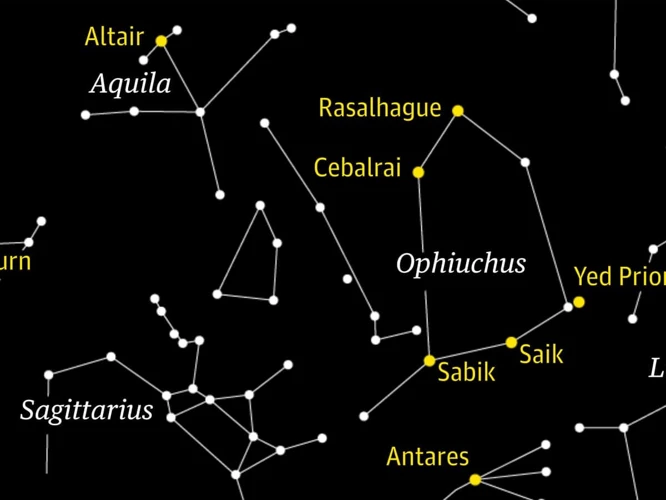
Major conjunctions in astrology encompass various combinations of celestial bodies that hold significant meaning and impact on our lives. These powerful alignments can provide valuable insights into different aspects of our existence. Let’s explore some of the major conjunctions in astrology:
Sun and Moon Conjunction:
The conjunction between the Sun and the Moon holds immense importance in astrology. Known as the New Moon phase, this alignment occurs when the Sun and Moon are in the same zodiac sign and degree. It symbolizes new beginnings, fresh energy, and the blending of conscious and subconscious forces. The Sun represents our core identity and vitality, while the Moon represents our emotions and intuition. When these two luminaries come together, it amplifies our emotions and intentions, creating a potent energy for setting intentions and initiating new projects or ventures.
Planetary Conjunctions:
Planetary conjunctions involve the alignment of two or more planets within the same zodiac sign or degree. Each planetary combination carries its own unique energies and influences. For example, the conjunction of Mercury and Venus signifies harmonious communication and creative expression. The conjunction of Mars and Saturn, on the other hand, can bring about disciplined action, determination, and challenges that require perseverance. Astrologers closely analyze these planetary conjunctions to understand the combined effects of the planets involved and their impact on our lives.
Zodiac Sign Conjunctions:
Zodiac sign conjunctions occur when two or more celestial bodies are located in the same zodiac sign, regardless of their degree placement. These conjunctions can provide insights into specific areas of life associated with the zodiac sign involved. For example, a conjunction of Mars, Venus, and Jupiter in Leo can signify a period of creative self-expression, passion, and abundance in love and relationships. These conjunctions highlight the themes and energies associated with the zodiac sign, amplifying their influence on our personality, experiences, and life events.
By understanding and interpreting major conjunctions in astrology, we can gain a deeper understanding of the complex dynamics and influences that shape our lives. These celestial alignments offer valuable insights into our individual journeys, allowing us to navigate the cosmic dance with wisdom and self-awareness.
Sun and Moon Conjunction
The Sun and Moon conjunction is one of the most significant conjunctions in astrology. This occurs when the Sun and Moon are in close proximity to one another in the same zodiac sign. The Sun represents our core essence, individuality, and conscious self, while the Moon symbolizes our emotions, instincts, and subconscious mind. When these two luminaries unite in a conjunction, their energies blend and intertwine, creating a powerful synergy.
The Sun and Moon conjunction signifies a harmonious integration of our conscious and unconscious selves. It represents a balance between our ego and emotions, allowing us to express our authentic selves with emotional intelligence. This conjunction is often associated with a strong sense of self-awareness, emotional stability, and an ability to be in touch with our inner world.
People born with the Sun and Moon conjunction in their birth charts may exhibit traits such as confidence, resilience, and an intuitive understanding of themselves and others. They have a deep emotional connection to their sense of purpose and are driven by their inner desires and aspirations.
However, the effects of the Sun and Moon conjunction can vary depending on the zodiac sign in which it occurs. For example, a Sun and Moon conjunction in a fire sign like Aries or Leo can result in a vibrant and assertive personality, while in an earth sign like Taurus or Virgo, it may manifest as practicality and stability.
Understanding the influence of the Sun and Moon conjunction in a birth chart allows individuals to recognize their unique gifts and challenges. It provides insights into how they can align their conscious desires with their emotional needs, enabling them to lead a more fulfilling and authentic life.
No suggested links for this section
Planetary Conjunctions
Planetary conjunctions are a fascinating aspect of astrology that involve the alignment of two or more planets in the same zodiac sign or degree. These alignments create a unique interplay of energies and can have a profound impact on an individual’s life. The specific combination of planets involved in a conjunction determines the overall influence and symbolism of the alignment. Each planet brings its own distinct qualities, and when two or more planets come together, their energies intertwine, creating a powerful force. For example, a conjunction between Venus and Mars signifies a blending of love, desire, and passion. This alignment can enhance one’s romantic nature, intensify relationships, and ignite a strong sense of attraction. On the other hand, a conjunction between Saturn and Pluto may symbolize a period of intense transformation and restructuring. This alignment can bring about deep changes, challenges, and a need for inner growth. The effects of planetary conjunctions are not limited to individuals alone; they can also have a significant impact on global events and societal trends. Astrologers closely analyze these alignments to gain insights into collective energies, economic shifts, political dynamics, and more. Understanding the symbolism and influences of planetary conjunctions allows astrologers to provide accurate and meaningful interpretations for individuals and society as a whole. Whether they bring harmony or tension, planetary conjunctions offer us an opportunity to navigate the cosmic dance and harness the energies for personal growth and transformation.
Zodiac Sign Conjunctions
Zodiac sign conjunctions are a particular type of conjunction in astrology that occurs when two or more celestial bodies align within the same zodiac sign. Each zodiac sign has its unique qualities and characteristics, and when planets or other points in a birth chart align in the same sign, their energies blend together, creating a powerful influence on an individual’s personality and life experiences.
When planets are in zodiac sign conjunctions, it magnifies the traits associated with that sign. For example, a conjunction between the Sun and Moon in the sign of Aries can intensify qualities such as assertiveness, leadership, and independence. Similarly, a conjunction between Venus and Mars in Libra can enhance the expression of harmony, beauty, and diplomacy.
Zodiac sign conjunctions can also bring out the shadow side of a sign. For instance, a conjunction between Saturn and Pluto in Capricorn can intensify qualities like rigidity, control, and power struggles. It’s important to remember that the interpretation of a zodiac sign conjunction depends on the specific planets involved and the overall dynamics of the birth chart.
These conjunctions can have a significant impact on various areas of life. They can influence relationships, career choices, personal growth, and even spiritual development. Astrologers analyze the energies of the planets involved, the sign they’re in, and their relationship to other points in the chart to provide a detailed interpretation of the effects of zodiac sign conjunctions.
Understanding zodiac sign conjunctions allows individuals to gain insights into their inherent strengths and challenges. By embracing and working with the energies of these conjunctions, individuals can navigate life’s circumstances more effectively and make the most of their astrological potential.
Example: A person with a zodiac sign conjunction of Mercury and Uranus in Aquarius may possess innovative thinking, intellectual brilliance, and a unique perspective. This combination can manifest as a great ability to communicate unconventional ideas or a natural talent for technology and scientific pursuits. However, it may also indicate a tendency towards mental restlessness or overstimulation. By understanding the dynamics and potential effects of zodiac sign conjunctions, individuals can harness the positive aspects of these alignments and navigate any challenges that may arise.
Effects and Interpretation of Conjunctions
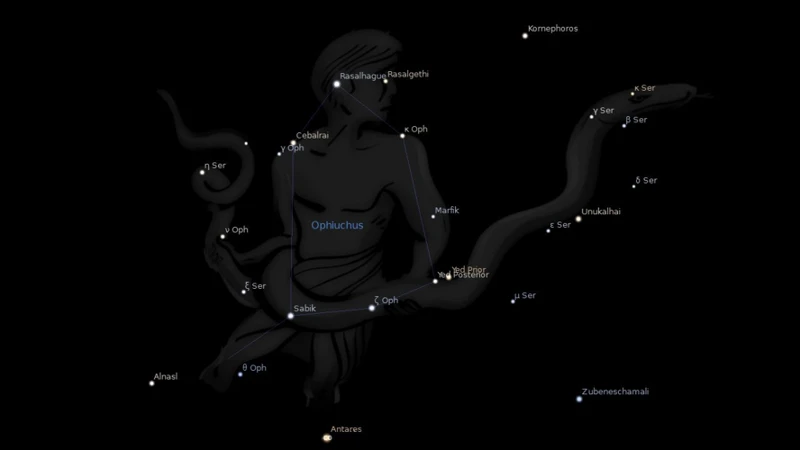
When it comes to the effects and interpretation of conjunctions in astrology, there is a wide range of possibilities depending on the planets involved, the signs they are in, and the degree of their alignment. Conjunctions can either have positive or negative impacts on an individual’s life. Positive conjunctions are often associated with the blending and amplification of energies, creating a harmonious and supportive influence. For example, a conjunction between the Sun and Venus can bring about a heightened sense of love, beauty, and creativity in a person’s life. It can also enhance their self-confidence and attract positive relationships. On the other hand, negative conjunctions can bring challenges and difficulties. For instance, a conjunction between Mars and Saturn may result in conflict, frustration, and obstacles. It can indicate a period of hard work, discipline, and potential setbacks. The interpretation of conjunctions also depends on the specific area of life they impact. For example, a conjunction involving the Moon and Mercury may affect communication, emotional intelligence, and intuitive abilities. Understanding the effects and interpretation of conjunctions requires analyzing the planets’ qualities, their symbolism, and the overall dynamics of the birth chart. Astrologers take into account the individual’s unique circumstances and other astrological aspects to provide a comprehensive understanding of how the conjunctions manifest in their life. By understanding the potential effects of conjunctions, individuals can gain deeper self-awareness and make informed decisions to navigate life’s challenges and opportunities.
Positive Conjunctions and Their Impacts
Positive conjunctions in astrology are alignments of celestial bodies that bring beneficial and harmonious energies to individuals. These conjunctions can have profound impacts on various aspects of life, including personality traits, relationships, career success, and overall happiness. When two or more planets come together in a positive conjunction, their combined energies create a powerful synergy that enhances and supports each other’s qualities. Here are some examples of positive conjunctions and their impacts:
1. Sun and Moon conjunction: The conjunction of the Sun and Moon represents a harmonious blending of one’s conscious self (Sun) and emotions (Moon). This conjunction fosters a strong sense of self-awareness, emotional stability, and inner balance. Individuals with this conjunction often have a clear understanding of their purpose in life and are able to express their emotions authentically. They possess a natural charisma and leadership qualities that can propel them to success.
2. Venus and Jupiter conjunction: When the planets of love (Venus) and abundance (Jupiter) come together, it signifies a period of blessings and good fortune in relationships and finances. This conjunction amplifies the qualities of love, beauty, and generosity. Individuals with this conjunction often have a magnetic charm, attracting love and opportunities effortlessly. They have a positive outlook on life and are known for their optimism and ability to see the best in every situation.
3. Mars and Uranus conjunction: The conjunction of the planets of action (Mars) and innovation (Uranus) brings an exciting burst of energy and creativity. This conjunction ignites a drive for change, independence, and personal freedom. Individuals with this conjunction are often fearless risk-takers, pioneering new paths and breaking through barriers. They possess a rebellious spirit and the ability to inspire and motivate others with their unique ideas and actions.
4. Moon and Jupiter conjunction: When the emotional Moon and expansive Jupiter come together, it signifies a period of emotional growth, optimism, and abundance. This conjunction boosts intuition, generosity, and a nurturing nature. Individuals with this conjunction are often compassionate, caring, and have a strong desire to make a positive impact on others. They have a natural ability to attract support and create a harmonious environment.
These are just a few examples of positive conjunctions and their impacts. It’s important to note that the specific effects of a conjunction can vary depending on the planets involved, their zodiac signs, and the individual’s unique birth chart. Positive conjunctions bring opportunities for personal growth, success, and happiness, allowing individuals to fully embrace their potential and fulfill their aspirations.
Negative Conjunctions and Their Effects
Negative conjunctions in astrology refer to the alignments that may bring challenging and conflicting energies into play. While every conjunction has the potential for positive or negative outcomes, negative conjunctions are often associated with difficulties and obstacles in various areas of life. These conjunctions can intensify the negative tendencies and traits of the involved celestial bodies, leading to potential challenges and hardships for the individual.
Here are some examples of negative conjunctions and their effects:
1. Mars and Saturn Conjunction: This conjunction often signifies a clash between assertiveness, ambition, and discipline. It can bring about frustration, anger, and a sense of restriction or limitation in one’s actions. It may lead to conflicts, delays, and obstacles in achieving goals and ambitions.
2. Venus and Saturn Conjunction: This conjunction can indicate difficulties in love, relationships, and financial matters. It may bring a sense of emotional detachment, loneliness, or a lack of fulfillment in personal relationships. Financial challenges, restrictions, or a sense of scarcity may also be experienced.
3. Sun and Uranus Conjunction: This conjunction can bring unpredictability, restlessness, and rebellion. It may lead to sudden disruptions, unexpected changes, and a struggle to find stability and consistency in different areas of life. It is important to remain adaptable and open-minded during this conjunction to navigate through its potential challenges.
4. Mercury and Neptune Conjunction: This conjunction can create confusion, illusions, and difficulties in communication and decision-making. It may lead to misunderstandings, deception, and a tendency to be easily influenced or deceived by others. Clarity and discernment become essential during this conjunction.
It is important to remember that negative conjunctions don’t necessarily guarantee negative outcomes, but they do require conscious effort and awareness to navigate through their potential challenges. These conjunctions can present opportunities for growth, resilience, and transformation if approached with patience, self-reflection, and a proactive mindset. Consulting with an astrologer can provide further guidance on understanding and working with negative conjunctions to harness their transformative potential and overcome obstacles.
Suggested link: Astrological Compatibility: Exploring Rising Sign Relationships
Identifying Conjunctions in Birth Charts
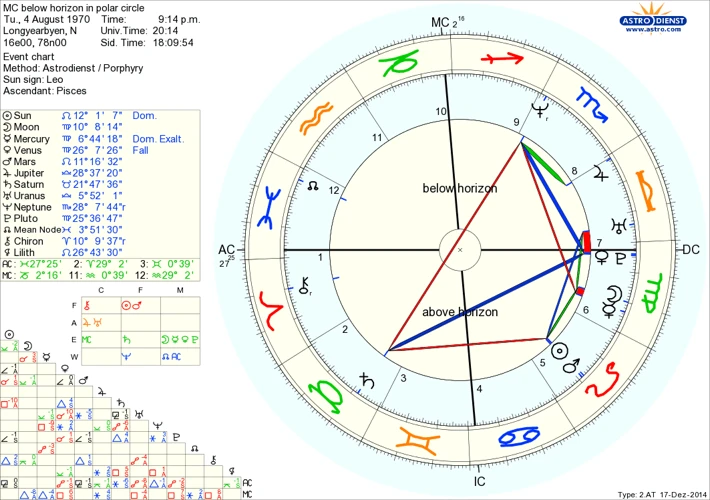
Identifying conjunctions in birth charts is a fundamental skill for astrologers and enthusiasts alike. These powerful alignments can provide valuable insights into a person’s unique astrological makeup and the potential influences they may experience throughout their life. To identify conjunctions in a birth chart, one must carefully examine the positions of the planets, stars, and other significant points, such as the Ascendant or Midheaven. These positions are typically represented by symbols and specific degrees within the zodiac signs. By analyzing the proximity of these symbols and degrees, astrologers can determine whether a conjunction exists.
To make the process more systematic, astrologers often use specialized software or online tools that generate birth charts and highlight the conjunctions automatically. These charts visually display the positions of celestial bodies and identify any conjunctions present. Another method is to create a table that lists the planets and their positions, highlighting the conjunctions between them. This approach allows for a quick overview of the chart and makes it easier to identify patterns and correlations among the planets.
When examining the birth chart, it’s essential to consider the orbs, which represent the permissible degree of difference between the planets for a conjunction to be considered significant. A larger orb allows for a wider range of degrees, whereas a smaller orb signifies a closer alignment. The astrologer must determine the appropriate orbs based on their own methodology and the specific aspect being considered.
Once the conjunctions have been identified, astrologers delve deeper into their individual meanings, taking into account the nature of the planets involved and their zodiac signs. Each conjunction holds a unique energy and symbolism, influencing various aspects of life. For example, a conjunction between Venus and Mars may represent a harmonious blending of passion and love, while a conjunction between Saturn and Pluto might indicate a period of transformation and challenges in personal growth.
By accurately identifying and analyzing the conjunctions in a birth chart, astrologers can provide valuable insights and predictions about a person’s life path, relationships, and inner workings. It is through the recognition and interpretation of these conjunctions that the true power and significance of astrology come to light.
How to Work with Conjunctions
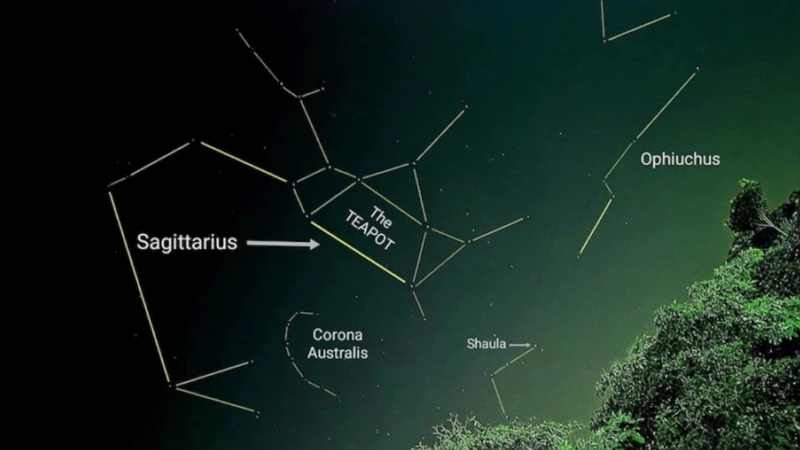
Working with conjunctions in astrology requires a deep understanding of their significance and the nuances they bring to a birth chart. Here are some key steps to effectively work with conjunctions:
1. Identify the conjunctions: Begin by identifying the conjunctions in the birth chart. Look for close alignments between planets, stars, or other important points such as the Ascendant or Midheaven. Note the zodiac signs and degrees involved in each conjunction.
2. Interpret the conjunctions: Analyze the nature and symbolism of the planets and zodiac signs involved in the conjunction. Consider their individual qualities, such as the element (fire, earth, air, or water) and modality (cardinal, fixed, or mutable) of the zodiac signs. Also, assess the specific characteristics and energies associated with the involved planets. This interpretation will provide insights into the potential impact and themes of the conjunction.
3. Consider the houses: Take into account the houses in which the conjunctions occur. The houses represent different areas of life, such as relationships, career, home, and spirituality. Understanding the house placement of a conjunction helps to refine the interpretation and provide more accurate insights into the specific areas of life where the conjunction’s influence will manifest.
4. Assess other aspects: Look at the aspects formed by the conjunction to other planets or points in the chart. Conjunctions can create harmonious aspects (such as trines and sextiles) or challenging aspects (such as squares and oppositions). These additional aspects modify the expression of the conjunction and provide further context and understanding.
5. Consider the individual’s experiences: Remember that astrology is highly personal, and each individual’s experiences with conjunctions will be unique. Take into account the individual’s personal history, life circumstances, and current challenges when interpreting the conjunction. This helps to tailor the analysis to the individual’s specific circumstances and provide more accurate guidance.
By following these steps, astrologers can effectively work with conjunctions and provide detailed and meaningful interpretations for individuals seeking astrological guidance. The combination of thorough analysis, knowledge of symbolism, and consideration of individual experiences allows for a more holistic understanding of the complex dynamics at play within conjunctions.
Remember, astrology is a nuanced and complex practice, and working with conjunctions requires a deep understanding of astrology as a whole. It is recommended to consult with a professional astrologer for a comprehensive and accurate interpretation of any conjunction in a birth chart.
Understanding Aspects and Configurations
Understanding the aspects and configurations of conjunctions is crucial in astrology to gain a comprehensive understanding of their influence. Aspects refer to the angular relationships between the planets involved in a conjunction. They determine the nature and quality of the energy exchange between the celestial bodies. The most commonly used aspects in astrology are the conjunction (0 degrees), opposition (180 degrees), trine (120 degrees), square (90 degrees), and sextile (60 degrees). Each aspect carries its own unique energy and can create different dynamics between the planets involved. For example, a trine aspect signifies harmony and flow, promoting ease and cooperation, while a square aspect signifies tension and challenges, leading to conflict and growth opportunities. To interpret aspects accurately, astrologers also consider the configurations formed by the conjunction. Configurations involve the placement of three or more planets in specific geometric patterns within the birth chart. Examples of configurations include the grand trine, which forms an equilateral triangle, and the T-square, which forms a right-angle triangle. These configurations deepen the impact of the conjunction by bringing additional energies and themes into play. Astrologers study the aspects and configurations to understand how the planets involved interact, influence each other, and shape the individual’s personality traits, strengths, challenges, and life experiences. By unraveling these complex relationships, astrologers provide valuable insights and guidance to help individuals navigate their life paths with awareness and purpose.
Famous Conjunctions in History
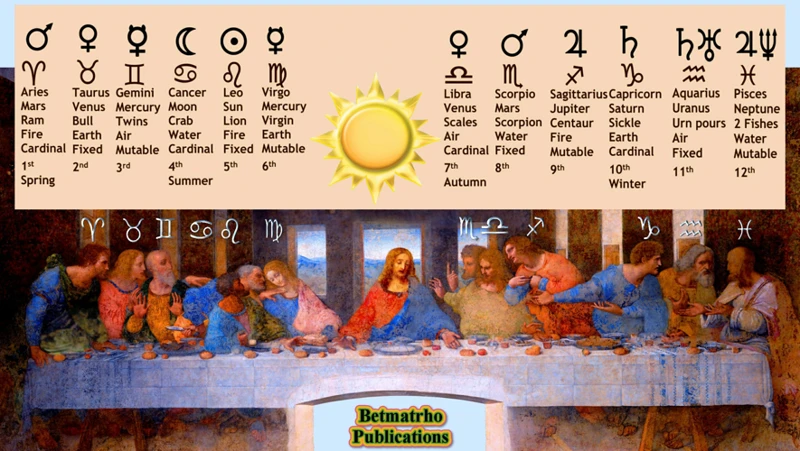
Famous conjunctions in history have captured the imagination of astrologers and enthusiasts alike. These remarkable celestial alignments have coincided with significant events and have left a lasting impact on our collective consciousness. One of the most famous conjunctions in history is the Great Conjunction of Jupiter and Saturn in 7 BCE, which is believed to have been the astronomical event behind the Star of Bethlehem, mentioned in the biblical story of the birth of Jesus Christ. This extraordinary alignment sparked speculation and wonder, and its symbolism continues to resonate to this day. Another notable conjunction occurred in 1781 when Uranus was discovered during a conjunction with the Sun. This discovery expanded our understanding of the solar system and marked a revolutionary moment in astronomy. In more recent history, the conjunction of Pluto and Uranus in the 1960s and 70s is associated with the counterculture movement and societal upheaval during that era. These conjunctions serve as reminders of the profound influence that celestial events can have on human history and cultural shifts. They invite us to observe and contemplate the interconnectedness of cosmic phenomena and our own human experiences.
Conclusion

In conclusion, understanding the significance of conjunctions in astrology is a fascinating and enlightening journey. Conjunctions serve as powerful cosmic alliances that bring together the energies of celestial bodies and shape our lives in profound ways. By studying and interpreting these alignments, astrologers gain insights into our personalities, behaviors, and life events. Conjunctions can create harmonious synergies or challenging aspects, impacting various areas of our lives such as relationships, career paths, and personal growth. Through birth chart analysis, we can identify and work with these conjunctions, harnessing their energies for self-awareness and personal evolution. Astrology provides us with a valuable tool for gaining deeper insights into ourselves and the world around us, ultimately empowering us to navigate life’s journey with wisdom and purpose. So, dive into the wondrous world of astrology, explore the significance of conjunctions, and unlock the hidden mysteries of the cosmos.
| Key Takeaways |
| Conjunctions in astrology refer to the alignment of two or more celestial bodies within the zodiac. |
| They have a significant impact on an individual’s personality, behaviors, and life events. |
| Astrologers interpret conjunctions by analyzing the involved planets, their zodiac signs, and the degree of alignment. |
| Conjunctions can create harmonious synergies or challenging aspects, affecting various aspects of life. |
| Understanding conjunctions allows us to gain insights into ourselves and harness their energies for personal growth. |
Frequently Asked Questions

What is the significance of conjunctions in astrology?
Conjunctions hold great significance in astrology as they represent the alignment of celestial bodies, bringing their energies together and influencing various aspects of our lives.
How are conjunctions interpreted in astrology?
Astrologers interpret conjunctions by analyzing the specific planets involved, their zodiac signs, and the degree of alignment. This helps in understanding the potential impact on personality traits, behaviors, and life events.
Are all conjunctions considered equally powerful?
No, not all conjunctions are equal in their effects. Some may create harmonious alliances, magnifying the energies of the planets involved, while others may form challenging aspects, leading to tension and conflict.
Can conjunctions affect our relationships?
Absolutely! Conjunctions have the potential to influence relationships by bringing together planets that govern various aspects of love, communication, and compatibility.
How can I identify conjunctions in my birth chart?
Identifying conjunctions in your birth chart involves analyzing the placement of celestial bodies and looking for instances where they align within a close proximity in the same sign or degree.
Do conjunctions have different meanings based on the planets involved?
Yes, the meanings of conjunctions can vary based on the planets involved. Each planet carries its own energy and symbolism, which influences the nature and significance of the conjunction.
Can conjunctions indicate career paths or life purpose?
Yes, conjunctions can provide insights into career paths and life purpose. Certain planetary alignments within a birth chart can signify specific talents, inclinations, and areas of focus.
Are positive conjunctions always beneficial?
Positive conjunctions generally bring favorable influences, but their impact can differ based on the overall dynamics of the birth chart. It’s important to consider the larger context for a comprehensive interpretation.
Can negative conjunctions be mitigated or improved?
While negative conjunctions may indicate challenges, they can be opportunities for growth and transformation. With awareness and conscious effort, individuals can work on improving the areas affected by such conjunctions.
Is it possible to have multiple conjunctions in a birth chart?
Absolutely! A birth chart can have multiple conjunctions, as it represents a snapshot of the sky at the time of birth. The presence of multiple conjunctions adds layers of complexity and depth to an individual’s astrological profile.
References
- Conjunct Astrology: What To Know About The Planetary …
- What are astrology aspects and how do they affect you?
Frequently Asked Questions

1. What is the significance of conjunctions in astrology?
Conjunctions in astrology play a significant role as they indicate the alignment and interaction of celestial bodies, influencing various aspects of an individual’s life.
2. How are conjunctions defined and explained in astrology?
Conjunctions occur when two or more celestial bodies align in close proximity to each other, intensifying the energy and influence of those specific planets or points in a birth chart.
3. What are the different types of conjunctions in astrology?
There are several types of conjunctions in astrology, including planetary conjunctions (when two or more planets align), zodiac sign conjunctions (when planets align within the same zodiac sign), and aspect configurations (such as stelliums or grand trines).
4. Why are conjunctions important in astrology?
Conjunctions hold importance in astrology as they highlight the fusion of energies between celestial bodies, providing insights into an individual’s personality traits, strengths, challenges, and potential life events.
5. What are the meanings and symbolism associated with conjunctions?
Conjunctions symbolize the blending of planetary energies, creating a powerful and concentrated force that can manifest in various areas of life, influencing relationships, career, personal growth, and overall life experiences.
6. Which are some major conjunctions in astrology?
Significant conjunctions in astrology include the Sun and Moon conjunction (symbolizing personal identity and emotions), as well as planetary conjunctions like the conjunction of Mars and Venus (representing passion and love).
7. How do positive conjunctions impact individuals?
Positive conjunctions bring harmonious energy, enhancing the qualities of the planets involved. They can indicate creative talents, successful partnerships, and opportunities for personal growth and fulfillment.
8. What are the effects of negative conjunctions?
Negative conjunctions can bring challenges and conflicts in various areas of life. They may signify internal struggles, difficulties in relationships, or obstacles in achieving goals. However, they also offer opportunities for growth and self-reflection.
9. How can conjunctions be identified in birth charts?
Conjunctions can be identified in birth charts by analyzing the degrees and positions of celestial bodies. When planets are located in close proximity within the same zodiac sign or house, a conjunction is present.
10. How can individuals work with conjunctions in astrology?
By understanding the energies of conjunctions in their birth chart, individuals can harness the strengths and navigate the challenges that arise from various planetary alignments. Seeking guidance from an astrologer can provide further insights and strategies for working with conjunctions.
References
- Your Guide To Understanding Planetary Aspects In Astrology
- What Is Planet Conjunction in Astrology? A Simple Guide …







